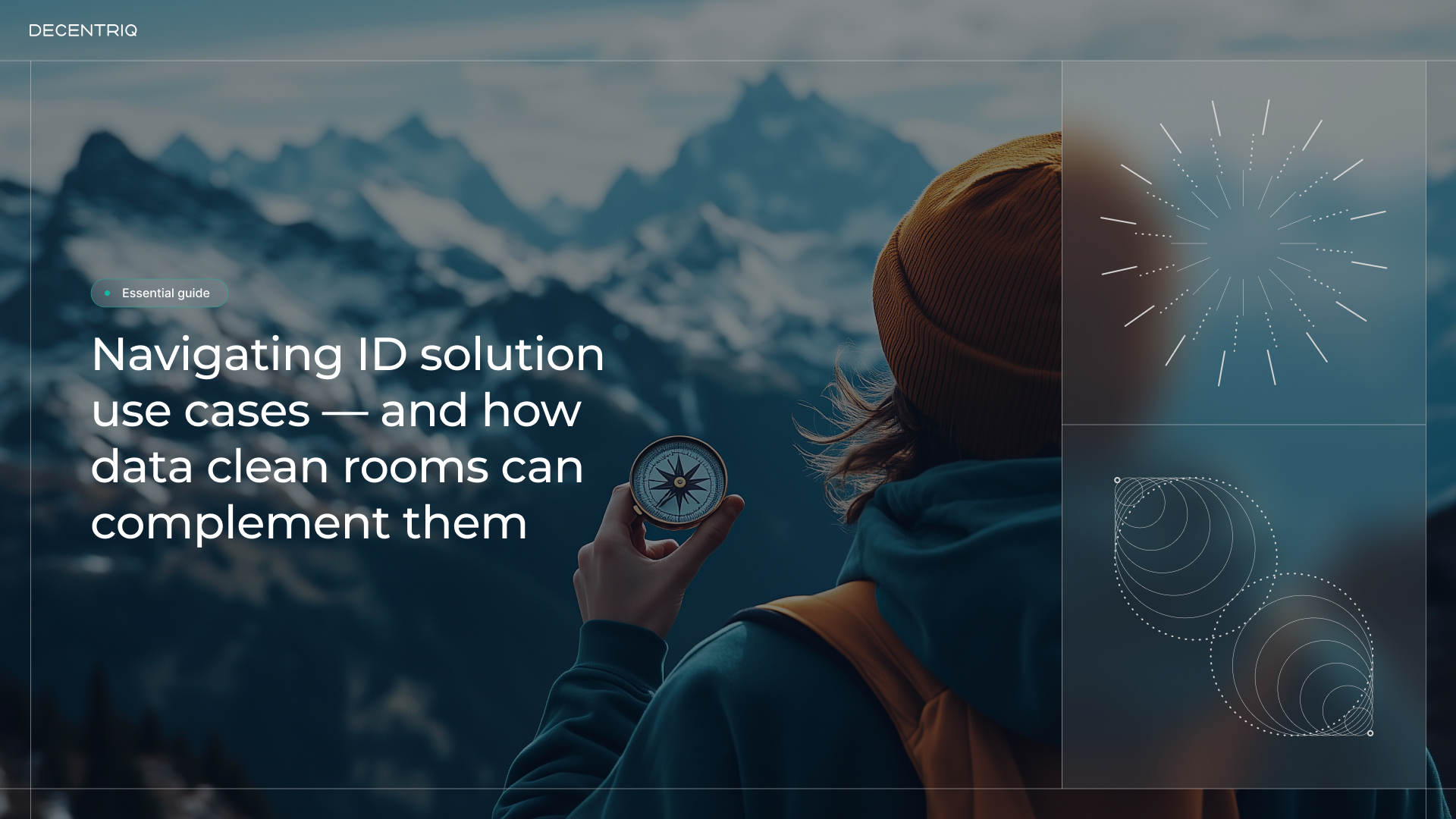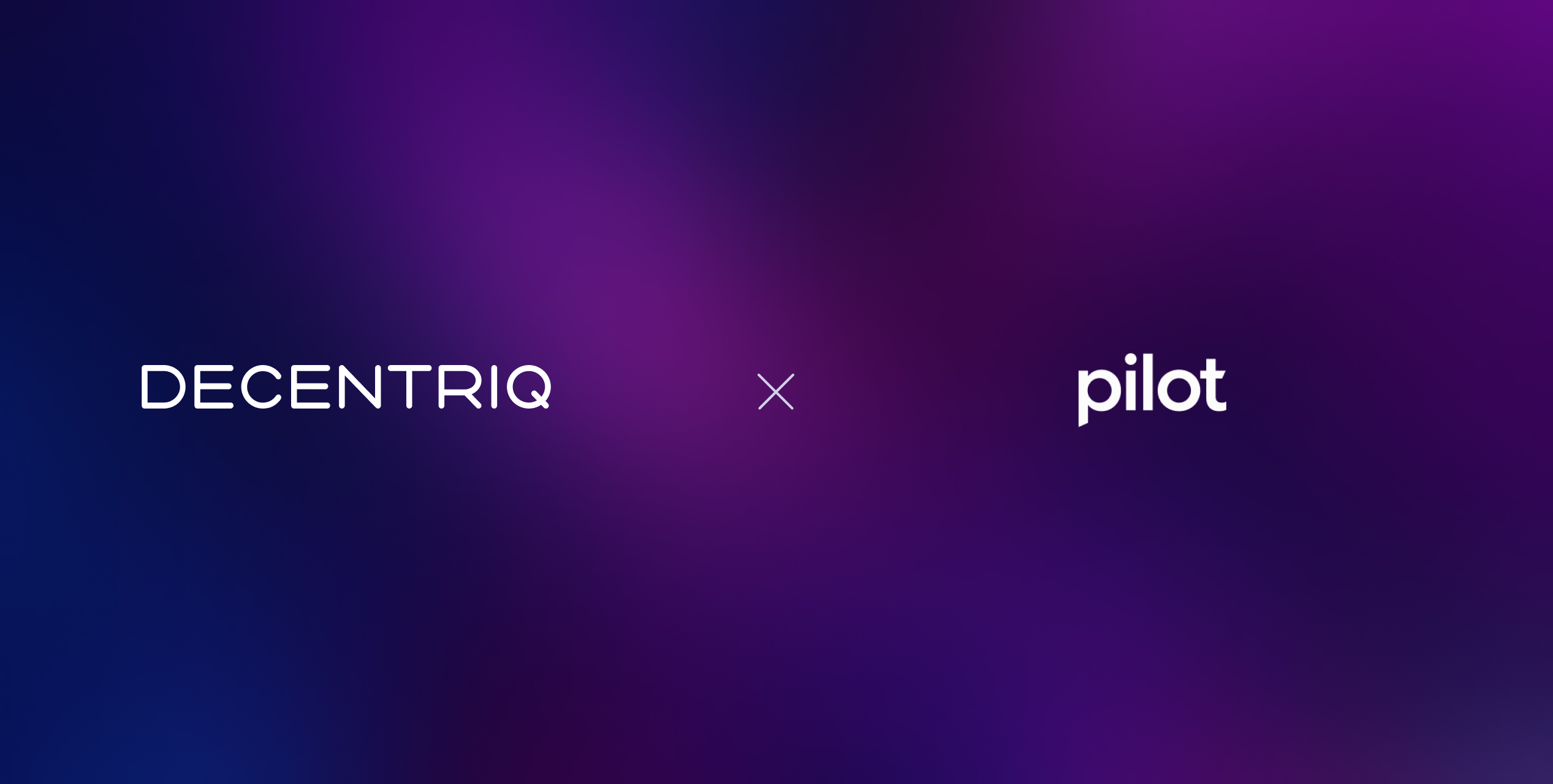.jpg)
How data clean rooms can enhance ID solutions
As third-party data declines, advertisers are turning to identity (ID) solutions to maintain audience targeting — or have already adopted them. It’s no surprise why: Major digital ad players back them, creating a strong ecosystem and seamless integration into existing workflows. However, ID solutions alone don’t fill all the gaps left by weak third-party data. Read our guide to learn what’s missing, how data clean rooms can help, and how to quickly implement an ID solution if you haven’t yet.

Publishers are staring down a future without third-party cookies. With browser-based tracking vanishing and privacy concerns rising, traditional data management platforms (DMPs) for publishers no longer cut it.
Yet advertisers still expect the same level of personalization that cookies once enabled.
Enter the concept of a cookieless DMP: while not a product that eliminates reliance on third-party cookies entirely, it’s a forward-looking approach to data management. It’s about evolving to focus on first-party data, identity-resilient strategies, and privacy-first infrastructure — preparing for a future where third-party cookies play a much smaller role.
Publishers find themselves at a moment of pivotal change in their industry, with 83% seeing considerable revenue decreases in the open marketplace in recent years. The key to turning this around? Putting their rich first-party data to use for cookieless advertising with the help of data clean rooms.

What is a data management platform for publishers?
A DMP is a technology that helps publishers collect, organize, and activate audience data for ad targeting and monetization. In the publishing context, a DMP enables segmentation of users based on behavior, demographics, and intent — and connects this data to supply-side platforms (SSPs) or their own internal demand-side platform (DSP) to buy their own inventory (IO).
Key functions of a DMP for publishers include:
- Collecting data from websites and mobile apps
- Building audience segments for targeted advertising
- Activating those segments across ad networks and platforms
These abilities mean data management platforms have had — and will continue to have — features essential to publishers’ adtech stacks:
- Audience segmentation
DMPs curate a publisher’s first-party audiences based on web and mobile user visits.
- Audience enrichment
DMPs have traditionally enriched these first-party publisher audiences by using third-party cookies. As highlighted earlier in this piece, this component is already suffering from a reduction in third-party data quality and will continue to do so.
- Audience extension with lookalikes
Publishers can use their DMPs to generate lookalike audiences using their first-party data. These lookalike audiences won’t be affected by third-party data decay, but they aren’t as precise as they could be, since data management platforms don’t have the capabilities to match with brands’ first-party data in a privacy-preserving way.
The good news is that publishers can still continue to get value from their DMPs as they head into the first-party future — when combined with data clean rooms. We’ll dive into how clean rooms can be combined with DMPs in the next section.
Obviously, data management platforms have traditionally relied heavily on third-party cookies — which is why they now need to evolve.
What does a “cookieless DMP” really mean?
A cookieless DMP isn’t a new platform — it’s an evolution of your existing setup to function in a world that’s moved beyond third-party data and siloed targeting strategies. It’s also about becoming part of a collaborative ecosystem, where publishers, advertisers, and data partners can securely activate and enrich data together.
Gone are the days of the DMP quietly sitting in the background. Today’s solution is front and center: a dynamic storefront where publishers can showcase and activate their audience data directly with brands and agencies. It’s built for secure, transparent collaboration — enabling all parties to enrich and exchange data in real time, without relying on third-party cookies or siloed systems.
That means:
1. Prioritizing first-party data collection
With third-party cookies on the way out, publishers need to double down on collecting data directly from their audiences. That means building better consent-driven touchpoints across web, app, and subscription environments — email sign-ups, content gates, and loyalty programs are all fair game.
This “logged-in” first-party data forms the backbone of sustainable, data-driven strategies because it’s permissioned, high quality, and fully under the publisher’s control. It's also essential for unlocking future-proof audience targeting and monetization opportunities.
2. Using identity solutions
In a fragmented identity landscape, publishers need the agility to onboard new identity providers quickly and manage multiple IDs within their DMP. Whether these identities are derived from emails or other signals, the key is being able to assess their performance — particularly which ones drive the most revenue. A flexible, data-driven approach to identity management is essential for adapting to ongoing changes and maximizing addressability.
Learn more about why ID solutions aren’t a one-size-fits-all solution post-cookies.
3. Enriching data through second-party data collaborations
First-party data has strong signal quality, but it can be limited in scale or diversity. Second-party data partnerships give publishers a way to enhance their audience profiles by integrating complementary datasets from external partners — including retail media networks (RMNs), other publishers, or independent data partners.
These collaborations should happen in privacy-safe environments like data clean rooms (more on that in the next point in this list), where each party can activate and analyse overlapping audiences without exposing raw data. The result is better targeting accuracy, stronger performance signals, and broader reach — all while staying compliant with privacy regulations.
4. Layering in data clean rooms to enable compliant collaboration
The real shift is toward an ecosystem-based DMP model, where clean rooms provide the secure infrastructure for multi-party collaboration. Instead of relying on cookies for tracking, a cookieless DMP setup leverages logged-in users, contextual signals, and privacy-safe audience creation to drive performance.
This allows publishers to move beyond one-to-one targeting strategies and instead participate in privacy-compliant data ecosystems where brands and partners can co-activate data, enrich audience insights, and measure outcomes together.
We’ll explore more of what this looks like in the section: “How data clean rooms complement DMPs.”
Why publishers need to rethink their data strategy
The shift away from third-party cookies is both technical and strategic. Publishers need more durable, compliant ways to monetize audiences.
Here’s why change is urgent:
- Third-party data is increasingly unreliable. It’s often inaccurate, fragmented, and blocked by browsers.
- Advertisers expect personalization. They want to reach precise segments with relevant marketing messages.
- Data privacy is now non-negotiable. Regulations like GDPR demand transparent, consent-based data use. And regulated industries interested in advertising with them may have even stricter rules around data use for marketing.
While these developments are generally positive for publishers, with 76% of ad buyers changing strategies from programmatic to direct buying, publishers who don’t modernize their data approach risk losing both relevance and revenue.
How could an updated strategy work in practice? Here’s a real-world example:
Imagine a mid-sized digital publisher with a strong newsletter subscriber base and broader on-site traffic.
- Through the newsletter, the publisher collects first-party identifiers like hashed emails with clear consent.
- These IDs are then linked to behavioral data from the broader website — such as content consumption patterns, session times, and topic affinities — to build enriched, high-signal audience segments within the DMP.
- Next, the publisher connects this enriched audience to a data clean room — introducing a collaboration layer where external partners can securely engage.
- A brand (like a travel advertiser) accesses the clean room UI to explore available segments, bring in their own customer data, or even involve a trusted data partner.
- From here, the matched audience is activated programmatically, with no third-party cookies in play.
This setup doesn’t just make the DMP cookieless — it transforms it into a collaborative, ecosystem-facing asset.
The result: targeted, privacy-compliant ad campaigns based on real user interest rather than inferred behavior from cookies.
How data clean rooms complement DMPs
A data clean room (DCR) is a privacy-first environment where publishers and partners (like advertisers or other media companies) can match and analyze data without sharing raw user information.
DCRs complement DMPs — they don’t replace them. While a data management platform handles data collection and activation, a DCR enables deeper collaboration and audience enrichment in a privacy-compliant way.
Since data clean rooms only rely on first- (not third-) party data, they are a perfect plugin for the audience enrichment component of DMPs. And since data clean rooms can also onboard first-party customer relationship management (CRM) data from advertising brands, they can enable the generation of more accurate lookalike audiences than with publisher data alone, as the lookalike can be built off the data of the brand's most valuable customers.
For an even deeper view into how these technologies can complement one another, here’s a side-by-side look:
.jpg)
By adding a clean room to their stack, publishers can extend the utility of their DMP: unlocking new revenue, more precise audience targeting capabilities, and safe data partnerships.
Decentriq’s data clean rooms for publishers ensure the highest standard of privacy. This means no one involved in any collaboration on first-party data can see the raw data of any other party — not the brand, not the publisher, and not us as the operators of the clean room.
“DMPs should not sit in the background, that’s an outdated model. These technologies should be client facing, enabling publishers to build their own ecosystem of partners (data providers, measurement, brands, agencies). In return, it develops an ecosystem of collaboration and trust, allowing the publisher to play a critical role.” — Juan Baron, Head of International Accounts, Decentriq.
Case studies:
IKEA and willhaben run a cookieless campaign reducing cost per visit by up to 30%
The challenge: IKEA and Austrian media company willhaben needed to run a campaign without relying on third-party cookies, while maintaining targeting precision.
The approach: Using their existing DMP infrastructure alongside Decentriq’s data clean room, they were able to match IKEA’s CRM data with willhaben’s audience — all in a secure, privacy-compliant environment.
The result: A fully cookieless campaign with significant performance gains, proving that first-party data activation at scale is effective.
Pierre Fabre and premium publishers collaborate to unlock deep persona insights
The challenge: Pierre Fabre, a global pharmaceutical and dermocosmetics company, wanted to better understand its digital audiences in a privacy-compliant way — without relying on third-party cookies or identifiers. Traditional targeting methods couldn’t provide the granular, consented insights the brand needed across its key publisher partners.
The solution: Pierre Fabre worked with multiple premium publishers inside a Decentriq data clean room, using privacy-safe universal IDs to unify audience profiles. This setup allowed the brand to analyse customer personas and engagement patterns across domains — all without exposing raw data or compromising compliance.
The result: The collaboration provided deep, consent-based audience insights that enabled stronger message personalization, more efficient media spend, and a future-proof blueprint for publisher-brand partnerships.
Choosing the right cookieless DMP setup
The future of data management platforms is cookieless as well as collaborative. Publishers need infrastructure that supports not only user privacy, but ecosystem-level activation. That means working with advertisers, data partners, and platforms in a way that’s transparent, interoperable, and secure.
So whether you opt for a setup that has solid collaboration abilities implemented into your DMP or add a data clean room to your existing DMP, here’s what to look for when evolving toward a cookieless, ecosystem-ready version of this technology:
Interoperability
Your DMP should integrate seamlessly with clean rooms, CRM systems, and ad platforms.
Privacy guarantees
Choose partners that prioritize encryption, data residency, and consent-based workflows.
Publisher-first workflows
Look for features built with publisher challenges in mind — like ID resolution, inventory management, and contextual targeting.
Clean room compatibility
If it doesn’t have features supporting privacy-preserving collaboration, your DMP should support or connect easily to clean rooms that allow you to collaborate with brands, retailers, or other media owners.
Decentriq helps publishers build a future-ready data management platform strategy by offering a clean room platform that integrates with your existing tools and supports privacy-first data activation.
Explore Decentriq’s data solutions for publishers
FAQs
Don’t some DMPs already have data clean rooms?
Many DMPs recognized the need to evolve their audience enrichment capabilities and responded by integrating clean room features into their platforms. However, these efforts often fell short — not only because of security limitations, but due to challenges around usability. In many cases, the clean rooms built into DMPs weren’t intuitive or accessible enough for advertisers and data partners, limiting their adoption and effectiveness in real-world collaboration.
How does a data clean room work with a DMP?
A data clean room complements a DMP by allowing publishers to match and analyze data with partners without sharing personal information. It enables secure collaboration while maintaining compliance.
What can publishers do to continue offering personalized ads (that meet privacy standards)?
Publishers should view data clean rooms as an additional tool that will replace the audience enrichment capabilities of their DMP. By choosing a provider that specializes in privacy-preserving data clean rooms, they can ensure that they are following the necessary privacy regulations.
What will happen if publishers don’t adopt 1) collaboration-first platforms or 2) data clean rooms as a complement to their DMPs?
There are a few possibilities here:
- Publishers will lose the ability to create rich audiences for targeting. Without any enrichment options, they will revert to selling first-party data segments and be unable to meet the growing demand for personalized marketing.
- Publishers can only generate lookalike audiences using their own first-party data on existing customers — without the ability to onboard advertiser data and calibrate these audiences for each advertiser.
How can publishers extend the utility of their existing DMPs in a cookieless environment?
Publishers with mature DMP setups can increase long-term value by shifting focus from third-party audience pools to authenticated, high-signal first-party data sources. Enhancements include integrating identity solutions like universal IDs, layering in clean room functionality for secure activation, and using DMPs as orchestration layers to unify CRM, onsite user behavioral data, and offline sources. The key is rearchitecting the DMP as a control hub — not a cookie sync engine.
What role does a DMP play when identity resolution moves outside the platform?
As identity resolution increasingly happens upstream — in clean rooms, customer data platforms (CDPs), or dedicated ID providers — the DMP’s value shifts from identity matching to activation logic, taxonomy management, and data classification. It becomes the bridge between privacy-compliant data sets and media buying platforms, where contextual data signals and deterministic IDs can be activated together. DMPs that integrate well with external ID graphs and clean rooms will remain viable.
Decentriq: Privacy-first infrastructure for publishers
Decentriq helps publishers adapt to the cookieless era with privacy-first clean room infrastructure that integrates directly with existing DMPs. Whether you’re trying to enrich your audience data, collaborate with brands, or future-proof your advertising stack, Decentriq makes it possible — without compromising trust or compliance.
Learn how Decentriq can future-proof your publisher data strategy
References
How data clean rooms can enhance ID solutions
As third-party data declines, advertisers are turning to identity (ID) solutions to maintain audience targeting — or have already adopted them. It’s no surprise why: Major digital ad players back them, creating a strong ecosystem and seamless integration into existing workflows. However, ID solutions alone don’t fill all the gaps left by weak third-party data. Read our guide to learn what’s missing, how data clean rooms can help, and how to quickly implement an ID solution if you haven’t yet.

Related content
Subscribe to Decentriq
Stay connected with Decentriq. Receive email notifications about industry news and product updates.




